Table of Contents
Are you wondering what the difference is between sushi, sashimi and nigiri? With so many delicacies out there, it can be difficult to distinguish between them. By diving into each one more closely, we’ll get a better idea of how they differ and which kind is right for your tastes. From arranging an elaborate sushi feast to picking up some pre-made bites from the grocery store deli case, this comprehensive guide will show you everything you need to know about the world of Japanese cuisine.
What is Sushi?
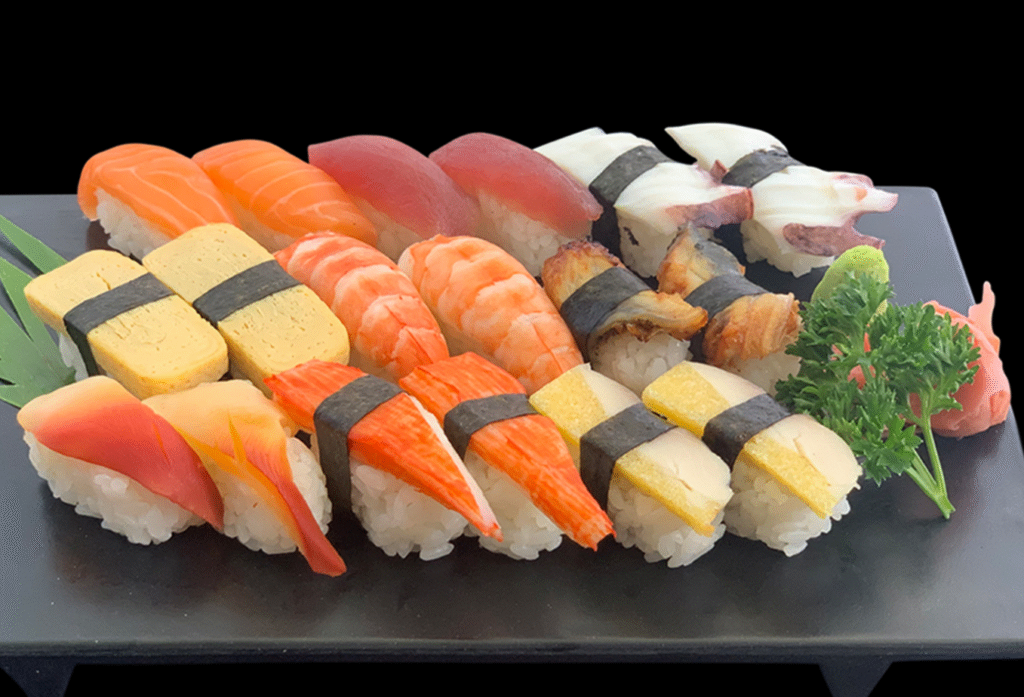
Sushi is a popular Japanese food that consists of cooked vinegared rice combined with other ingredients such as vegetables, seafood, and sometimes tropical fruits. The most common type of sushi is rolled sushi (makizushi), which comes in cylindrical pieces. Inside these rolls are various fillings such as cucumber, avocado, fish, or shrimp. Other types of sushi include chirashizushi (rice bowl topped with sashimi) and oshizushi (pressed sushi).
What is Sashimi?
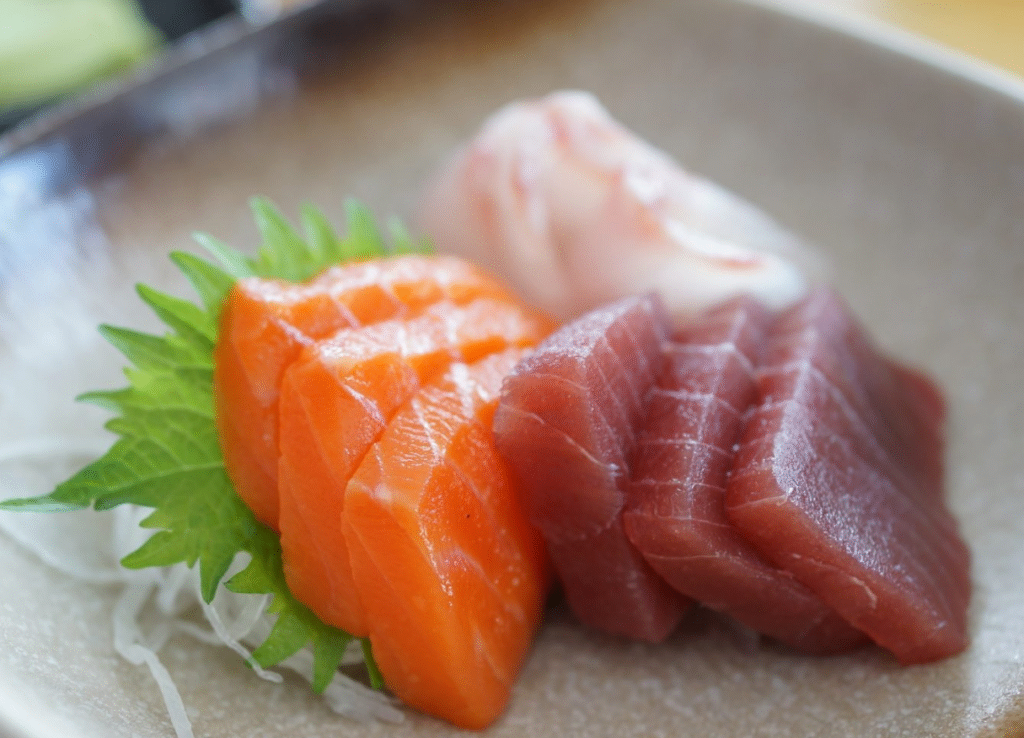
Sashimi is thinly sliced raw fish or meat served without rice. It’s typically enjoyed on its own but can also be presented with sides like soy sauce, wasabi, pickled ginger, and daikon radish. Popular types of sashimi include salmon, tuna, mackerel, squid, yellowtail, and octopus.
What is Nigiri?
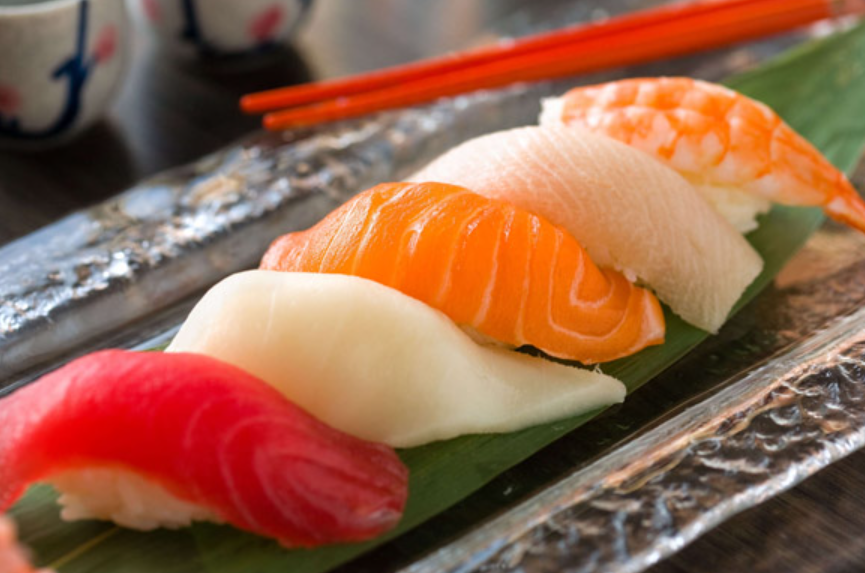
Nigiri is a type of sushi consisting of an oblong mound of rice that’s topped with a slice or two of raw fish or other seafood such as eel or shrimp. It’s usually served with soy sauce and wasabi on the side. The most popular types of nigiri are tuna (maguro), salmon (sake), yellowtail (hamachi), eel (unagi) and octopus (tako). In some cases, it can also be prepared with cooked ingredients such as egg (tamago) or grilled squid (ika).
History of Sushi, Sashimi, and Nigiri
Sushi has been around for centuries, with its origins dating back to the 4th century in Southeast Asia. It was adopted by the Japanese during the 8th century and evolved into different shapes and forms over time. Sashimi is thought to have originated during the Edo period (1603-1868) as a result of catching large amounts of fish. Nigiri has also been around since that same time period and was originally called “neta zushi” or “topped sushi.”
Ingredients Used in Sushi, Sashimi, and Nigiri
Sushi is usually made with a combination of seaweed (nori), cooked vinegared rice, vegetables, and proteins such as fish or seafood. Common ingredients include cucumber, avocado, tuna, salmon, shrimp, crab meat, and egg.
Sashimi typically consists of high-quality cuts of raw fish. The most popular types are yellowtail (hamachi), tuna (maguro), salmon (sake) and squid (ika).
Nigiri is usually made with a slice or two of raw fish atop an oblong mound of vinegared rice. It’s often served with sides like soy sauce and wasabi for flavor. Popular types of nigiri include tuna, salmon, yellowtail, eel and octopus.
Preparation Styles
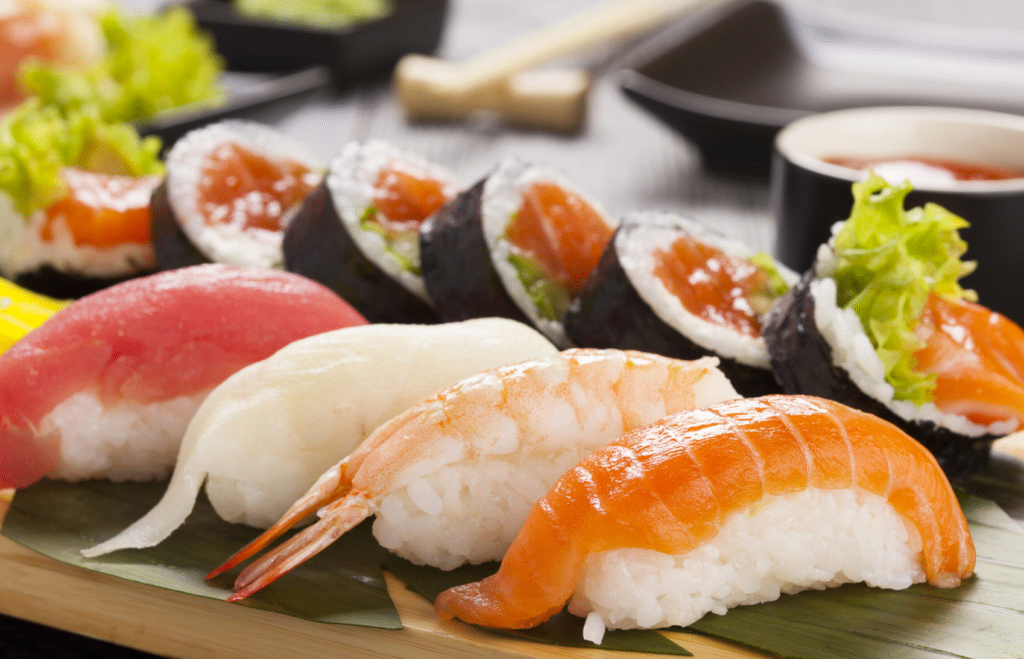
Sushi: Rolling and Cutting Techniques
Sushi is typically prepared using rolling and cutting techniques. The chef will spread cooked vinegared rice on a sheet of nori (seaweed) and fill it with the desired ingredients before rolling it up into a cylindrical shape. Once rolled, the sushi can be cut into bite-sized pieces or left whole.
Sashimi: Slicing Techniques
Sashimi is usually sliced into thin pieces using a very sharp knife. This requires precision and skill in order to ensure the slices are even and uniform. The chef will often use special slicing techniques, depending on the type of fish or seafood being used.
Nigiri: Shaping Techniques
Nigiri is typically made by hand and requires the chef to shape an oblong mound of cooked vinegared rice using their fingers. Once shaped, a slice or two of raw fish is placed on top of the rice. This can be tricky since the ingredients must be evenly balanced in order for the nigiri to look and taste its best.
Serving Suggestions for Each Dish
Sushi: Sushi is usually served with pickled ginger (gari) and soy sauce for dipping. It can also be enjoyed with sides such as wasabi, daikon radish, or pickled vegetables.
Sashimi: Sashimi is typically served on its own but can be accompanied by sides such as soy sauce, wasabi, pickled ginger, and daikon radish.
Nigiri: Nigiri is usually served with soy sauce and wasabi on the side. It can also be enjoyed with sides such as pickled vegetables or daikon radish.
Which One Is Healthier?
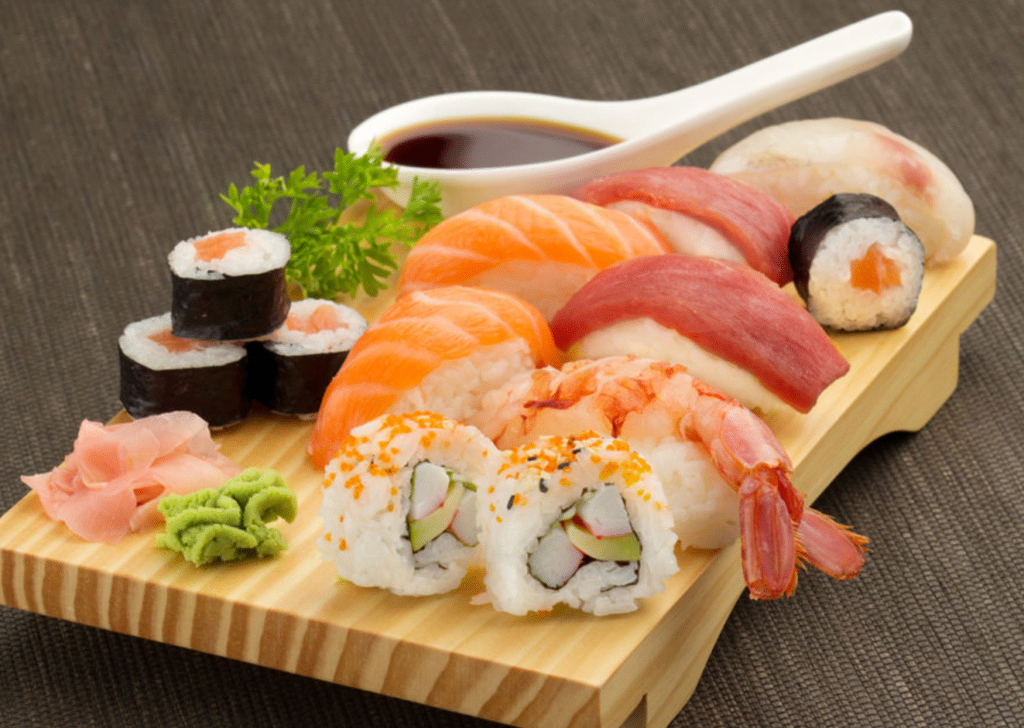
When it comes to health, all three dishes can be part of a healthy diet if prepared and eaten in moderation. Sushi, sashimi, and nigiri are good sources of protein and contain essential vitamins and minerals such as iron, zinc, magnesium and omega-3 fatty acids. Additionally, the nori used in sushi is high in fiber, vitamin A, and calcium.
In terms of calories, sashimi is the lowest in calories since it doesn’t contain any rice or other fillers. Nigiri and sushi are slightly higher in calories since they both use rice. However, if you opt for vegetable-based sushi rolls instead of those with added proteins like fish and seafood, the calories can be kept in check.
Health Benefits
Sushi, sashimi and nigiri are all healthy options as they provide protein, vitamins, minerals and omega-3 fatty acids. Consuming these dishes in moderation can also help reduce the risk of developing heart disease, stroke and other chronic diseases due to their high levels of beneficial nutrients. Additionally, since they’re low in calories and fat, they make for a great snack or light meal.
Safety Tips
When eating sushi, sashimi and nigiri, it is important to take proper safety precautions in order to prevent foodborne illnesses. Always make sure that the fish and seafood used are fresh and have been properly handled and stored. Additionally, you should only consume cooked ingredients such as cooked eggs or grilled squid when preparing these dishes at home.
Frequently Asked Questions | Sushi vs Sashimi vs Nigiri
1. Are there any dietary considerations to be aware about?
Raw fish may contain parasites and bacteria, so it is important to choose fish that has been frozen or properly cooked before consuming. Additionally, sushi can be high in sodium due to the addition of soy sauce and other condiments.
2. Are there any cultural considerations with eating these dishes?
In Japan, sashimi is considered a delicacy and should be eaten in small bites with chopsticks. It is customary to mix wasabi into your soy sauce when eating sashimi or nigiri as a sign of respect for the chef. When dining at a sushi restaurant in Japan, you should also avoid making loud noises or talking on your phone while eating.
3. What are some examples of each dish?
Sushi examples include California rolls, spicy tuna rolls and avocado rolls. Sashimi can include salmon, tuna or yellowtail fish. Nigiri sushi typically consists of various types of seafood such as salmon, mackerel, shrimp or eel.
4. Is it safe to make these dishes at home?
Making sushi at home is possible with the right ingredients and tools. However, making sashimi or nigiri should only be done by experienced chefs due to the risk involved in preparing raw fish. If you are new to making sushi at home, it is best to start with simpler recipes that do not require slicing raw fish such as maki (rolled) sushi.
Conclusion
Sushi, sashimi and nigiri are all delicious and nutritious options that can be enjoyed in moderation. Whether you’re looking for a light snack or a full meal, these dishes provide many health benefits and make for a great addition to any diet. Be sure to take safety precautions when preparing them at home and always opt for the freshest ingredients available.
Read more at Ohsnap Cupcakes!